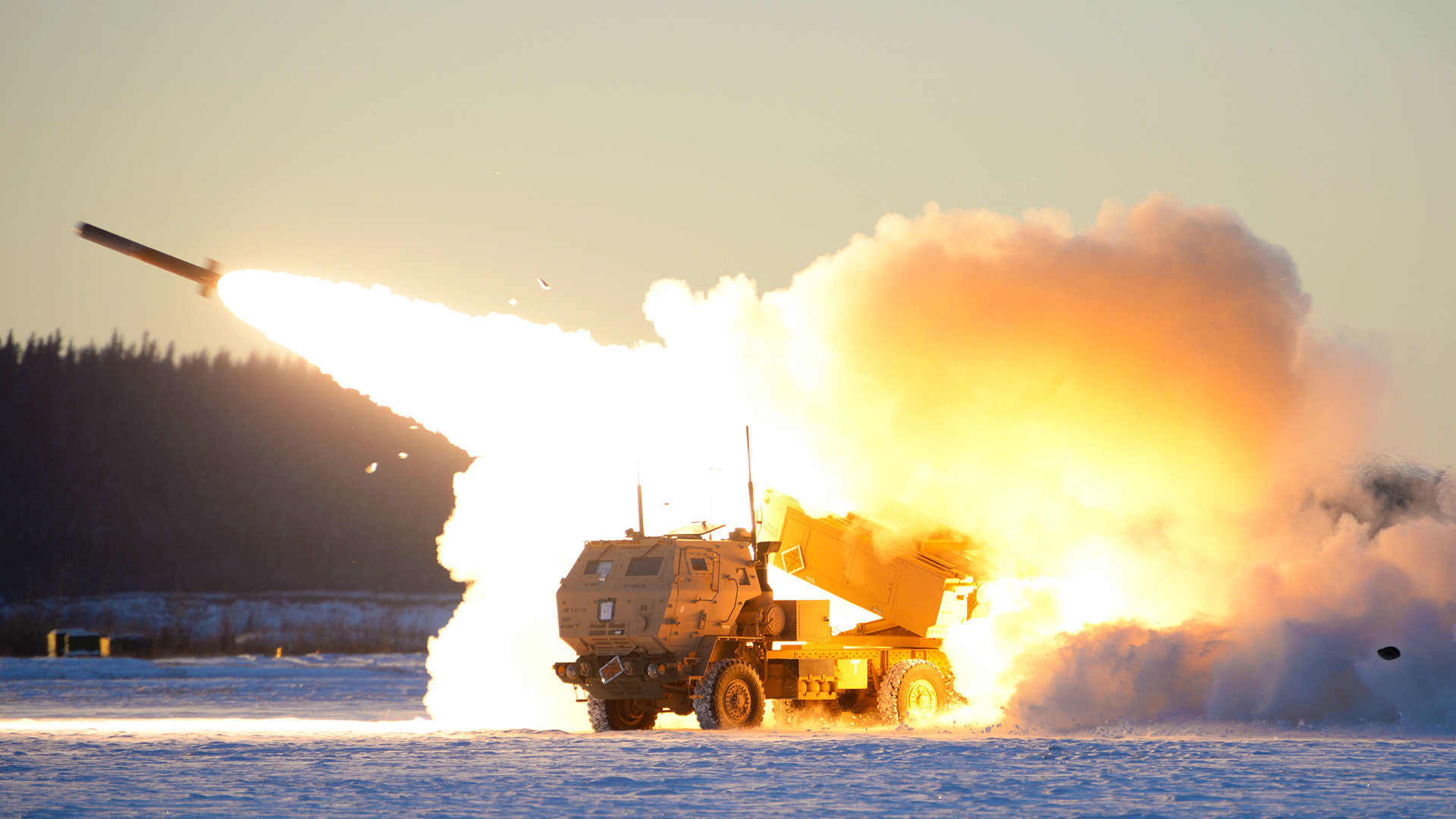

This week the Pentagon announced it was sending even more advanced munitions to Ukraine’s military. The $400 million package strengthens its artillery capabilities, even as the war in Ukraine is increasingly looking like a conflict from the past. Despite the advanced missile systems pouring into the country, the two armies are fielding old tanks, beaten up cars mounted with new cannons and deploying tactics from the early 20th century, not the 21st. That weaponry and armor have become more important than ever since the initial Russian push failed and the war has turned into artillery slugfests and trench warfare.
Ukraine has received a steady stream of ever-more-advanced weaponry from NATO member states. Those started with Javelin and Stinger anti-air and anti-tank missiles, to large 155mm howitzer cannons, to most recently the high mobility artillery rocket systems, or HIMARS. These have drastically increased Ukraine’s ability to meet the larger Russian army in battle.
This past week the United States announced it was sending four more HIMARS, a 50 percent boost from eight to 12. The U.S. has stressed that the HIMARS aren’t being used to strike inside of Russia, just at Russian forces in Ukraine’s territory. The weapons were already a game changer – as the name suggests, they can fire multiple rockets in one salvo, but the platforms are also highly maneuverable allowing them to relocate and attack quickly. Ukraine quickly put them in the field once they arrived late last month.
The U.S. announcement comes with a leveling up of the country’s artillery capabilities. The Pentagon is sending 1,000 155mm rounds to Ukraine. The precision munitions will likely make for more accurate attacks on Russian formations. But depsite all of the advanced and “smart” weapons now being used, the war is increasingly “dumb.”
These high-tech additions come even as the war in Ukraine has featured much more low-tech, jerry-rigged weapons and systems. With limited resources, Ukraine’s fighters are adapting and improvising weapons platforms and mobile units. The result is several antiquated tactics and vintage equipment sharing space with modern precision targeting and brand new weapons. The War Zone reported on Ukraine fielding 1980s-era motorcycles, with soldiers firing anti-tank weapons from side cars. Old pick-up trucks have been modified into technicals, whose speed allows Ukraine to make up for Russia’s numerical advantage in tanks.
As for Russia, it has turned to mobilizing Soviet-era T-80 tanks to make up for losses. And the war itself has moved from modern fast moving small-unit battles to large, artillery driven fights of attrition in the eastern Donbas and Luhansk regions. Heavy shelling from both sides have torn up the countryside and heavily damaged cities such as Severodonetsk. World War I-style trenches have been a fixture in the country’s east since fighting with Russian-backed separatists started in 2014.
The U.S. didn’t say if it will send additional precision munitions or more HIMARS to Ukraine. However, given the escalation in Western artillery technology, even as the war becomes more Mad Max-ian, it seems highly plausible.
The latest on Task & Purpose
- The few, the proud, the drunk: Meet America’s revolutionary yet ‘ungentlemanlike’ troops of 1776
- A rocket mysteriously crashed on the Moon. The military has no idea who sent it
- Fake Navy SEAL ordered to stop being a fake Navy SEAL
- Why the Army refuses to call its new light tank a ‘light tank’
- The Air Force now has a golden F-16
Want to write for Task & Purpose? Click here. Or check out the latest stories on our homepage.
